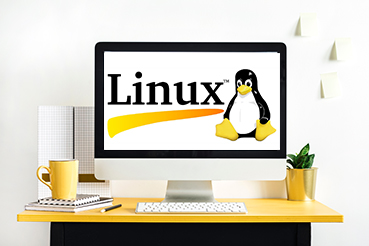In the intricate landscape of IT management, the dynamic interplay between open-source and commercial software is extremely important, especially when dealing with Server Message Block (SMB) protocol solutions. SMB, a fundamental protocol for file and printer sharing, serves as the cornerstone for efficient data exchange within and across organizations. The SMB protocol, under the domain of Microsoft, stands at the core of a seamless IT ecosystem across local networks, remote locations, and cloud-based environments. Profound comprehension of the SMB protocol’s operational intricacies is indispensable for IT managers seeking to optimize their workflows.
SMB Protocol for Operational Excellence
SMB protocol operates as the lynchpin in the seamless facilitation of file sharing. The SMB protocol utilizes several ports to establish connections and facilitate file and printer sharing across networks:
- Port 139 (NetBIOS) – is considered less secure due to its susceptibility to various vulnerabilities and security threats. So it’s not the default port but technically it can be used by SMB2.
- Port 445 (Direct Hosting) – offers enhanced security and better performance compared to port 139. It enables communication over TCP/IP, making it the preferred choice for many organizations using a VPN. Firewalls restrict traffic on Port 445 as it can open up a network to vulnerabilities and potential exploitation.
- Port 443 (QUIC) – has gained relevance with the adoption of the QUIC (Quick UDP Internet Connections) protocol, which is becoming increasingly important for efficient and secure data transfer. As opposed to Port 445, Port 443 is often left open in firewalls to facilitate secure web traffic. SMB over QUIC leverages this port for fast, encrypted, and reliable file sharing across networks without requiring a VPN.
Being aware of which port your SMB protocol implementation uses is crucial for effective network configuration and security.
Consider the scenario where diverse systems, ranging from Windows and Linux to macOS, require frictionless file exchange. Profound comprehension of SMB protocol ensures not only optimal performance but also compatibility and the efficient flow of data.
To navigate the complexities of SMB protocol and file sharing, IT managers frequently face the choice between SMB protocol commercial libraries, exemplified by Visuality Systems’ solutions, and open-source alternatives such as Samba.
Comparing SMB Protocol Commercial Libraries with Samba
Strengths of SMB Protocol Commercial Libraries
- Advanced Features: Commercial libraries often endow users with advanced authentication mechanisms, performance enhancements, and fortified security features.
- Professional Support: Immediate access to technical experts ensures the rapid resolution of issues, reducing downtime to a minimum.
- Regular Updates: Commercial solutions uphold their robustness through the frequent release of updates, including essential security patches.
- Licensing Assurance: Clearly delineated licensing terms grant peace of mind regarding compliance and legalities.
- Multi-OS Support: SMB protocol commercial libraries, like Visuality Systems’, are often designed to operate seamlessly across various operating systems, a notable advantage over Samba, which is primarily tailored for Linux.
Weaknesses of SMB Protocol Commercial Libraries
- Cost: Licensing fees must be budgeted, but they save internal software development which can be more expensive and very time consuming.
- Vendor Dependency: Placing your eggs in one vendor’s basket could possibly lead to vendor lock-in unless adaptability and flexibility are ensured.
- Customization: Commercial solutions, in some cases, may offer restricted flexibility for tailoring SMB protocol behaviors to meet specific organizational requisites.
In the context of software delivered as source code, like in the case of Visuality Systems’ YNQ, customization doesn’t apply as a weakness. In fact organizations can make code modifications as needed or engage with the software’s developers to submit their feature requests that will be enrolled into the product roadmap.
Strengths of Samba
- Open Source Customization: Samba can be adapted to organizational needs, enabling extensive customization and integration with open-source tools, yet subject to GPLv3.
- Cost-Efficiency: Samba’s open-source has no licensing costs, making it a budget-friendly choice accessible to organizations with financial constraints.
- Community Support: A global community contributes to the development and support of Samba with knowledge and expertise, however everyone has their own agenda and sometimes very different priorities.
Weaknesses of Samba
- Security and Vulnerabilities: Samba’s open-source nature exposes it to potential vulnerabilities, necessitating proactive security measures.
- Community-Based Support: Organizations may engage with longer issue resolution times when relying on community support, potentially impacting operational efficiency.
- Customization and Emerging Protocols: Organizations may face licensing challenges when trying to adapt Samba to their specific requirements or new protocols, like QUIC, into their SMB file-sharing processes.
- Licensing Terms & Conditions: Samba’s open-source use of the GPLv3 license can be a double-edged sword. While it allows for extensive customization and flexibility, GPLv3 mandates that any modifications or derivative works based on Samba must also be licensed under the GPLv3 even if it does not align with the specific licensing needs of your organization. This can pose a challenge if you seek to incorporate Samba into your proprietary software or prefer more permissive licensing terms.
Microsoft’s Shift Towards Open Source Initiatives
In the past, Microsoft had a reputation for being a proprietary software giant, often seen as a rival to open source. However, in recent years, the company has undergone a significant transformation in its approach to open source. This shift is not only apparent in its adoption of open-source tools but also in its willingness to collaborate with open-source projects like Samba. Microsoft’s newfound commitment to open source can be attributed to several factors:
- Changing Market Dynamics: The technology landscape has evolved, with the majority of organizations relying on a mix of open-source and proprietary software. Microsoft recognized the importance of collaboration in this mixed ecosystem.
- Azure and Cloud Services: Microsoft’s cloud platform, Azure, has embraced open-source technologies, making it essential for Microsoft to be compatible with various open-source solutions, including Samba.
- Customer Demand: Many organizations demanded greater flexibility and cross-platform interoperability, which led Microsoft to support open-source initiatives like Samba.
One notable milestone in Microsoft’s engagement with Samba is the development of the SMB/CIFS protocol documentation. This documentation proved instrumental for Samba developers in enhancing compatibility and ensuring seamless interaction with Windows-based systems. Moreover, Microsoft’s participation in events like the SambaXP conference showcases the company’s interest in working alongside the Samba community, exchanging ideas, discussing challenges, and exploring opportunities to enhance the SMB protocol.
Visuality Systems – Harmonizing SMB Protocol Commercial Software and Samba
Practical scenarios often necessitate the simultaneous utilization of SMB protocol commercial software, like Visuality Systems’ solutions, and open-source Samba. Consider a context where IT managers grapple with the need for cross-platform file sharing across diverse systems, both locally and in the cloud. This hybrid approach ensures optimal performance, compatibility, and adaptability to the ever-evolving landscape of IT.
Samba, as an open-source solution, encounters specific challenges when juxtaposed against commercial SMB protocol solutions like Visuality Systems’ YNQ and jNQ. These challenges encompass licensing intricacies, potential intellectual property disputes with Microsoft, community-based support mechanisms, vulnerability management, and support for emerging SMB protocol dialects.
Visuality Systems emerges as a strategic partner of Microsoft in the SMB protocol domain, bridging the gap between open-source and commercial software. Our SMB protocol libraries offer a powerful mix of adaptability, performance, and professional support. By selecting the right tools, IT managers can ensure the efficient coexistence of SMB protocol commercial software with open-source solutions, enabling seamless file sharing across diverse platforms. This approach results in a more robust and dynamic software ecosystem, catering to the multifaceted demands of contemporary IT environments.
Tal Widerman, CEO, Visuality Systems








